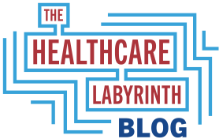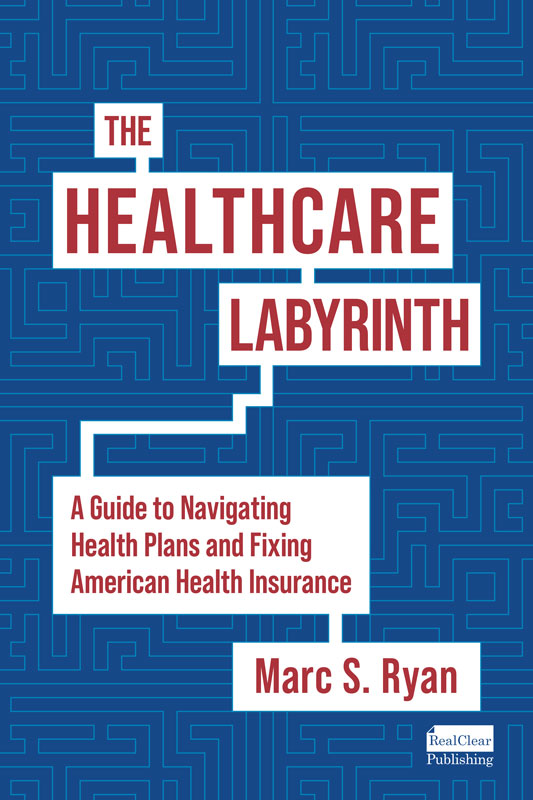If you have read my book, The Healthcare Labyrinth (available at this website), you know I am a proponent of negotiating drug prices nationally as well as the Medicare drug price provisions of the Inflation Reduction Act (IRA) more specifically. In my book, I argue a few fundamentals about drug prices in America:
- Drug costs have increased dramatically over the past many decades and have become a material overall cost driver.
- Drug spending is driven by brand drugs, which have gone up tremendously.
- America’s brand drug prices are extremely high compared with other developed countries. Depending on the study, Americans pay more than double what other developed nations do. In some studies, the difference in price between the U.S. and other developed nations can be as much as four times higher.
- We are the only developed nation that does not negotiate prices nationally. This is the case regardless of the type of healthcare systems nations have – socialized medicine, single payer, or private affordable universal access. See my November 30, 2023 blog for more on healthcare systems and types here: https://www.healthcarelabyrinth.com/american-healthcare-is-a-huge-outlier-in-terms-of-costs-and-outcomes/ .
- Drug price negotiations should not end innovation in the drug world. Even if there are some impacts to research and development, there are many ways to address this, including some additional government funding.
I am a Republican and I hold atypical views on drug pricing for my party – at least compared with most House and Senate GOP lawmakers. But the truth is, the last president and current president have proposed similar reforms on drug pricing. Respected think tanks with bipartisan representation support change, too. Polls also show support across parties for drastic changes to lower drug prices.
I also don’t believe that if you support drug price negotiations and other reforms that somehow you are anti-free market. Negotiations and contractual agreements are a cornerstone of the free market. But more importantly, the drug market is not a free market anyway. It lacks transparency and often the players in the drug chain don’t even know what price is set. There are monopolies and oligopolies in the drug supply chain that would make trustbuster Teddy Roosevelt blush.
What Medicare or national drug negotiations would do is exactly what is going on right now, without all the skullduggery. PBMs and plans have formularies. They negotiate every day with drug makers on various fronts, including costs and what does or does not go on the formulary and where. Medicare or the national government would be doing the same with more transparent clinical and financial rules. What drug makers don’t like about it is they could not use all sorts of perverse financial arrangements that lack transparency to influence decisions at the plan and PBM level.
Last, while I believe in private free markets in healthcare, government has an obligation to regulate something as crucial as someone’s access to drugs and medical services. It is acting as a fiduciary for people’s long-term health and financial well-being. That is what government does.
Two recent studies appear to underscore what I have been saying. One confirms that the prices of the ten drugs selected for Medicare price negotiation are indeed very high when compared with other nations’ prices. The other discounts the Armageddon theory peddled by Big Pharma that somehow innovation will cease to exist or substantially evaporate because of the IRA.
The latest on Medicare drug pricing and its impacts
How do the U.S. prices for initial ten drugs under Medicare price negotiation compare with those in other developed countries and why there is room to negotiate? — The Commonwealth Fund published an international drug price analysis and found that the list prices for the initial ten drugs selected for negotiation in Medicare are about three times higher in the United States than in other countries. Even after rebates and discounts, net prices are well higher in the U.S. than other countries, with the exception of Janssen’s Xarelto (rivaroxaban) in Japan only. Other developed countries do not have rebates and discounts, which are usually retroactive in the U.S. In most instances, consumers pay based on the gross list price rather than net post-rebate prices. This means consumer cost-sharing on drugs is usually very high. Rebates for the ten drugs range from 9% to 50% according to the study.
The study looked at the following countries in addition to the United States — Australia, Canada, France, Germany, Japan, the United Kingdom, and Switzerland. The countries in the study represent all three system types. The drugs’ 2021 prices in each country were looked at. The researchers say studies like this will be key in terms of benchmarking going into the negotiations for 2026 pricing agreements.
A Department of Health and Human Services (HHS) report finds that the ten drugs represented $46.4 billion in total Medicare Part D spending and $3.4 billion in out-of-pocket costs in 2022. About 7.7 million Medicare enrollees (15% of Part D enrollees) used one or more of the ten drugs. Overall, total Part D gross spending for the ten selected drugs more than doubled from 2018 to 2022, going from about $20 billion to about $46 billion, an increase of 134 percent. The rate of growth in spending for these ten drugs is more than three times as fast as all Part D drugs over the same time period. In addition, seven of the drugs received an R&D tax credit from the U.S. federal government. One has a government interest patent.
I did some additional calculations and found that U.S. prices range from 30% to 270% more than the other nations in the survey. This is based on U.S. net prices (after rebates and discounts are considered). The average (not waited for each drug’s usage) is 134% more. As I noted earlier, U.S. prices are more than double other countries. Further, I noted that certain drugs can be as much as four times higher. The study here seems to validate both statements.
Will the IRA impact drug maker innovation? – The answer right now is that it hasn’t – at least not yet. A recent policy brief by research and consulting firm ATI Advisory found the following:
- Most drug companies’ innovation decisions in the first half of 2023 were not directly linked to the passage of the IRA’s Medicare drug negotiations but more likely to economic and company trends.
- This holds true for planned R&D spending as well as pipeline discontinuations.
- Recent drug company earnings calls indicate the United States market remains a key priority.
- Domestic investment is up rather than down.
The firm says decisions will tie to the IRA eventually and that there may be some small inklings pointing in this direction. The analysis notes that some firms are prioritizing research and investment to reach the market earlier. This would accelerate revenue in the short term and reduce it in the later years of the drug life cycle. But, as ATI notes, this is exactly what the IRA was intended to do.
Various brand drug industry and industry-aligned studies argue there will be an enormous impact on drug maker revenue and thus innovation investments and the number of drugs coming to market. But other studies argue that the impact will be minimal – as little as a dozen or so drugs over the next three decades. The truth is somewhere in between.
Brand drug makers argue that all this will mean lower life expectancy in America and substantial impacts on Americans’ health outcomes. At the same time, we have some of the worst outcomes in part due to high prices, especially in the drug world. Many Americans simply cannot afford the cost of drugs generally or the high out-of-pocket costs generated by our retrospective rebate system. So, high drug prices can also have a deleterious impact on outcomes. In other developed nations, much more is done on wellness, prevention, and care management. Medication adherence and affordability are part of that. But they do not suffer from obscene prices.
The IRA begins the process that exists in all other developed nations.
In the end, the IRA’s Medicare drug price negotiation provisions start us down the road that is used by other developed nations. While it is limited to Medicare for now, there is hope it will be expanded to the commercial world. And then perhaps include Medicaid so as to replace a retroactive rebate system there as well. Because Medicaid has zero or de minimis cost-sharing, the rebates do not have the same effect as in other lines of business but the program is a monster administratively. The IRA, too, could be expanded to include some other key features in other developed nations:
For the U.S.’ current drug pricing system, see my December 14, 2023 blog here: https://www.healthcarelabyrinth.com/pbm-transparency-and-reform-is-a-big-trend-in-the-american-healthcare-system/ .
For what other developed countries do to obtain lower drug prices, check out my December 26, 2023 blog here: https://www.healthcarelabyrinth.com/the-insanity-of-drug-pricing-and-shortages-a-christmas-story/
I do not doubt the power of drug innovation and its effect on American’s health for the good. It is clear. My family and I are living examples. It also reduces other costs. But drugs should be reasonably and transparently priced in order for all Americans to obtain the benefits of drug innovation and for America to reduce its healthcare costs.
Sources:
https://insidehealthpolicy.com/inside-drug-pricing-daily-news/major-changes-drug-rd-trends-unlikely-be-tied-negotiation-analysis (Article may require a subscription.)
#drugpricing #ira #brandrugmakers #medicare #medicareadvantage #partd #pdp
— Marc S. Ryan





